Everybody loves Aussies! Did you know that not only are they some of the best herding dogs you can get, but they are also among the most colorful breeds? There are more than a dozen Australian Shepherd colors you can choose from!
Known for their high intelligence and high energy level, it’s no wonder Aussies are one of the most popular breeds. These beautiful dogs make amazing family pets, as well as exceptional working dogs.
The Australian Shepherd breed is also known for its colorful fur that can come in many shades and patterns.
So, what Australian Shepherd colors are there? Why are some colors rarer than others? And why are their eyes so weird?
Here are all the answers!
Standard Australian Shepherd Colors
All dogs must meet the breed standard set by the local kennel club. If you live in the United States, the main canine club is the American Kennel Club (AKC).
Responsible breeders will always produce dogs that follow the breed standard. This is because they care for the development of the breed and produce dogs that are as healthy as possible.
The breed standard includes all physical traits, including coat colors that dogs should come in.
Here are the standard Australian Shepherd colors you can find these dogs in:
1. Black

Solid black coat colors are among the rarest in the Australian Shepherd breed. Most Aussies have at least some white or tan markings on their bodies. This is why many experts consider dogs with just a few subtle markings on a black coat to be black Aussies.
The black coloring is the result of a recessive gene. This means that the pup has to inherit the solid black gene from both of its parents, which is pretty uncommon.
Black Australian Shepherds usually have dark brown eyes, although amber eyes can also happen.
2. Black And White

Also known as black and white bicolor or black bi Aussies, these pups closely resemble black Australian Shepherds, but the white markings are more extensive.
The white areas typically cover the dog’s face, chest, and paws, although not all dogs will have the markings on the same areas.
The eye color is the same as in solid black Australian Shepherds, as the two have very similar genetics.
3. Black And Tan

Known as black and tan bicolor, this is yet another type of black bi Aussies. They look similar to black and white Australian Shepherds, but with tan markings instead of white ones.
In fact, their shading closely resembles the most popular Doberman coloring, which is why many people consider them to be one of many Doberman mixes. While this can happen, purebred black and tan Aussies do exist.
Black and tan Australian Shepherds are also quite rare, which can make them quite expensive.
4. Black Tricolor
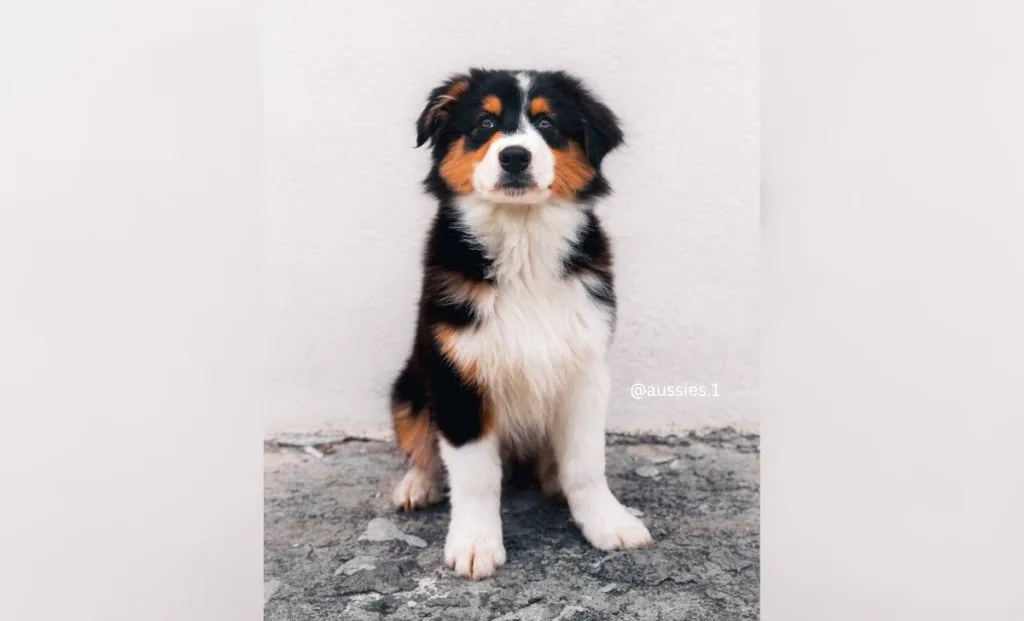
For the final variation of the black Australian Shepherd, you have the black tricolor Aussie.
These pups have a black base coat with white and tan markings.
In general, the white is located on their muzzle and goes in a straight line to their forehead, as well as on their chest, stomach, and paws, while the copper points are above their eyebrows, on their cheeks, and lower legs paws.
This is a somewhat common Australian Shepherd color, and many breeders produce pups in these shades.
5. Blue Merle
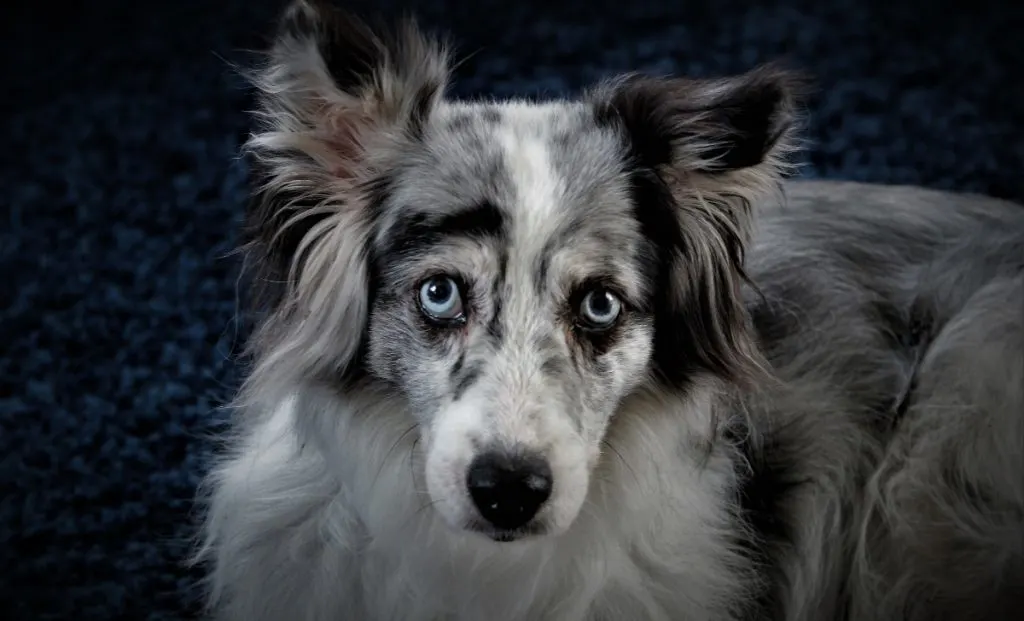
Blue merles are black Australian Shepherds with the merle dilution gene. This gene gives dogs a unique marbled appearance, which includes a combination of blue, white, and black shades.
Standard dilution genes, as their name suggests, dilute the base color. Blue dilution genes will turn the black coloring into a beautiful shade of bluish gray which can vary in shade from dark blue to silver.
These genes also cause brown eyes to turn into a lighter shade, which is why blue dogs often have dark blue eyes. The same can happen to a dog’s nose, which might also have black and blue spots.
The merle gene causes partial dilution. In other words, it won’t affect a dog’s coat in its entirety, leaving specks of base color and, usually, white.
It might also affect dog eye color, causing both or one eye to be blue. This is why heterochromia is so prevalent among merle dogs and is so common in Australian Shepherds.
While solid blue merle Aussies are quite rare, since there aren’t that many solid black Australian Shepherds that can be affected by the merle gene, other variations of this coat color are some of the most popular in this dog breed.
6. Blue Merle Bicolor
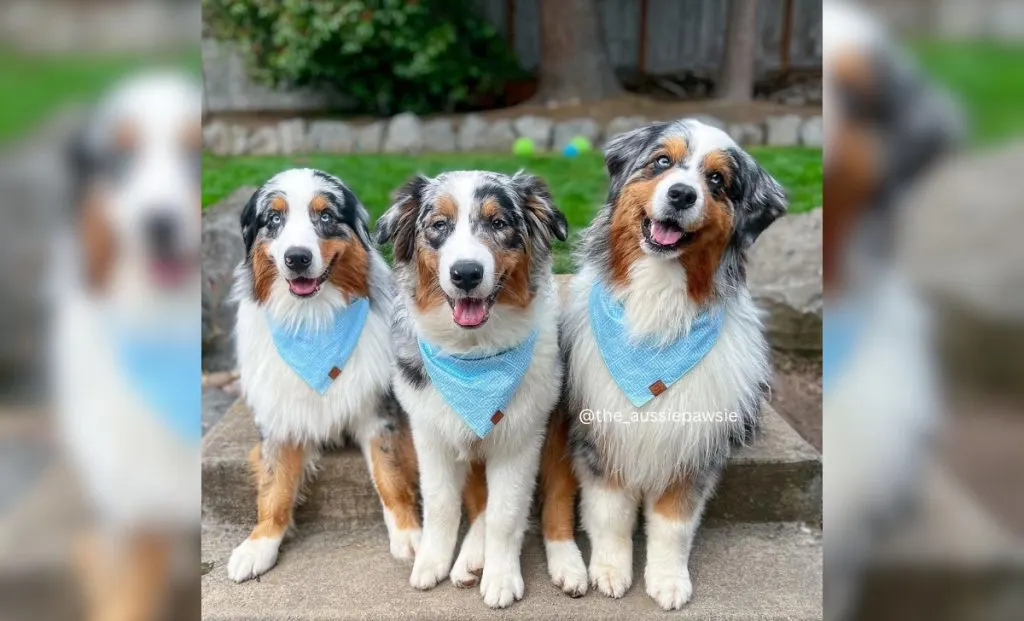
Blue merle bicolor Aussies are black bi Australian Shepherds affected by the merle gene. They typically look just like standard blue merle pups but with tan markings on their face, chest, and paws.
These dogs have a stunning appearance that makes them loved by dog owners worldwide. Many Australian Shepherd breeders sell these pups, not just in the US but in the UK as well!
Just like other variations of merle dogs, blue merle bicolor Aussies can also have heterochromia. Not only can their eyes be oddly colored, but some pups have both blue and brown in one eye!
7. Blue Merle Tricolor
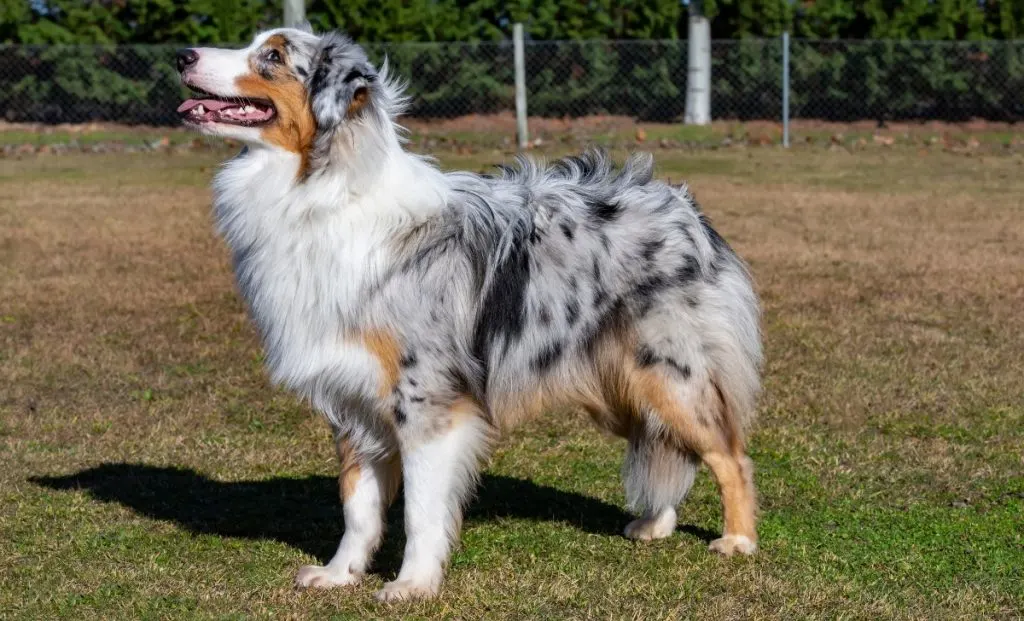
Blue merle tricolor is yet another extremely popular and common Australian Shepherd coat color. This coloring is the result of the merle gene affecting a black tri Aussie.
As a result, these pups will often have a merle coat color with white and tan markings on their bodies that will be in the same position as markings on a black tricolor Australian Shepherd.
This coat color, combined with their two-colored eyes, truly gives these pups a unique appearance.
8. Red
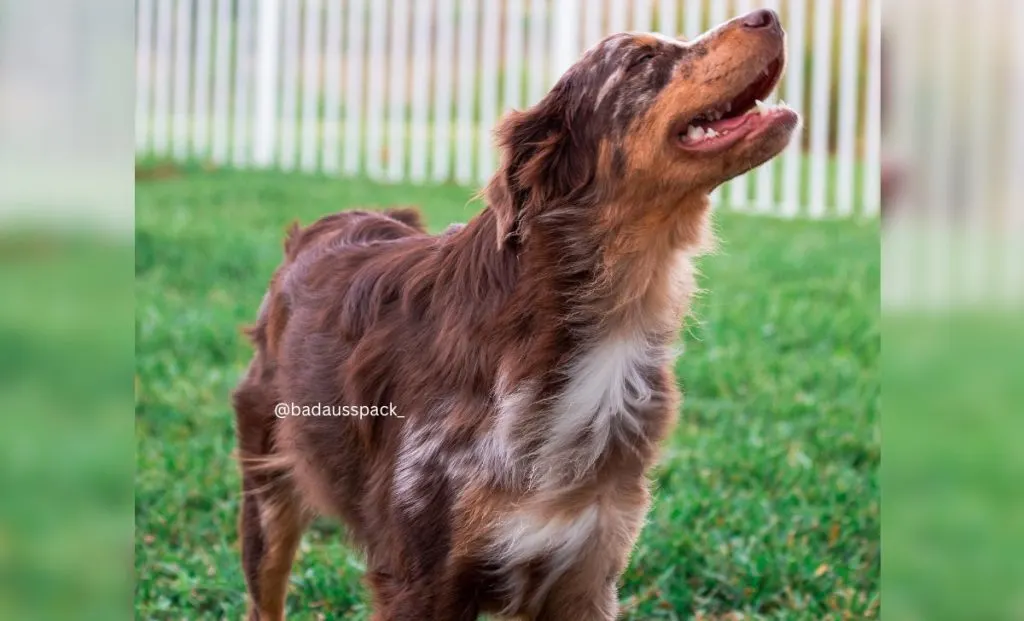
Just like black Aussies, red Australian Shepherds are also extremely rare. Many people who see this pup will think they are looking at some Australian Shepherd mix and not a purebred dog!
The coats of these gorgeous pups can come in various shades of red, from deep chestnut to copper or light cinnamon.
The solid red color is also the result of a recessive gene, making it rather difficult to breed. If you want to get a red Australian Shepherd, get ready for long waiting lists, as most of these pups are reserved before they can leave the kennel.
Minor white or tan markings are allowed by the breed standard, although they have to be really subtle.
These dogs typically have hazel eyes, although dark brown eyes are also common.
Many people will call these dogs the brown Australian Shepherd, although AKC classifies them as red.
9. Red And White

Red and white pups are also known as the red bicolor Australian Shepherds. They have the same white markings as black and white Aussies but on a red base coat.
This is the only two-colored combination that can occur on red Australian Shepherds. No purebred Aussie can get tan markings without the white ones. If the breeder tries to sell you red and tan Aussies, you’re dealing with a scam, and the person is most likely selling you a mutt.
10. Red Tricolor

Red tri-color Aussies are known for their red base coat, white markings on their stomach, chest, muzzle, and a stripe over their muzzle to their forehead, as well as tan or copper cheeks and legs.
While stunning in appearance, the markings might not appear as prominent as is the case with black tricolor dogs due to the smaller color contrast.
A typical eye color for red tricolor Australian Shepherds is deep brown to amber, but blue or green eyes are also common – although very rare.
11. Red Merle
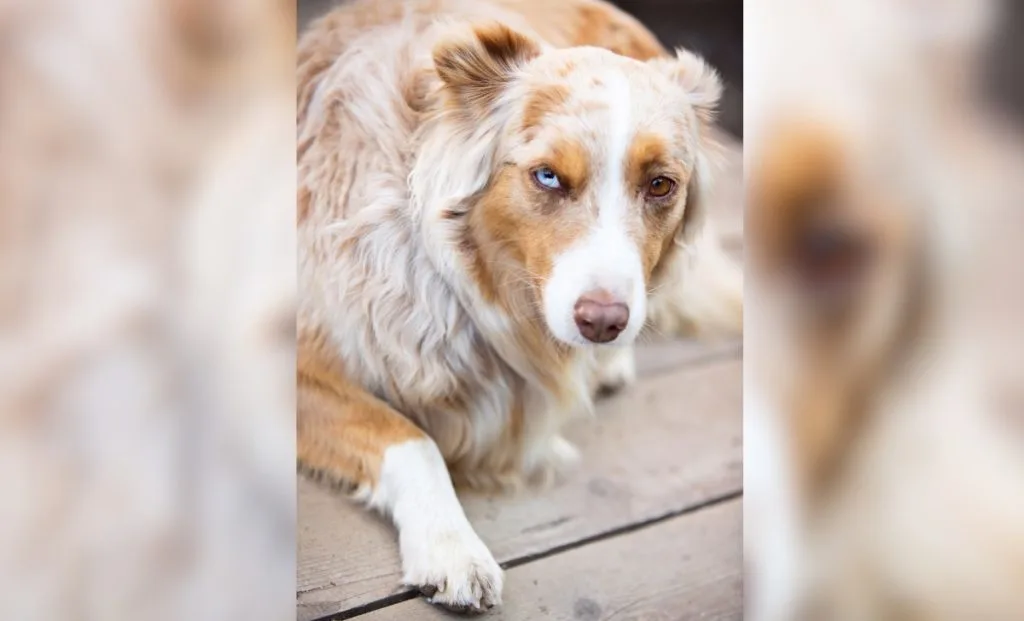
Red merle Aussies are red Australian Shepherds with the merle dilution gene.
These dogs have a stunning marbled appearance in light copper and white. They might look as if someone splashed these colors on them!
This, combined with common bright blue eyes or heterochromia, gives them a striking appearance that will leave no one indifferent.
Even their noses can be marbled in color!
12. Red Merle Bicolor

Red merle bicolors are red merles with white markings on their muzzle, chest, stomach, and paws. While they’ll have other white spots, these locations must remain pure white.
Just like with other merle variations, these pups too can have some marbling in their eye color, as well.
13. Red Merle Tricolor
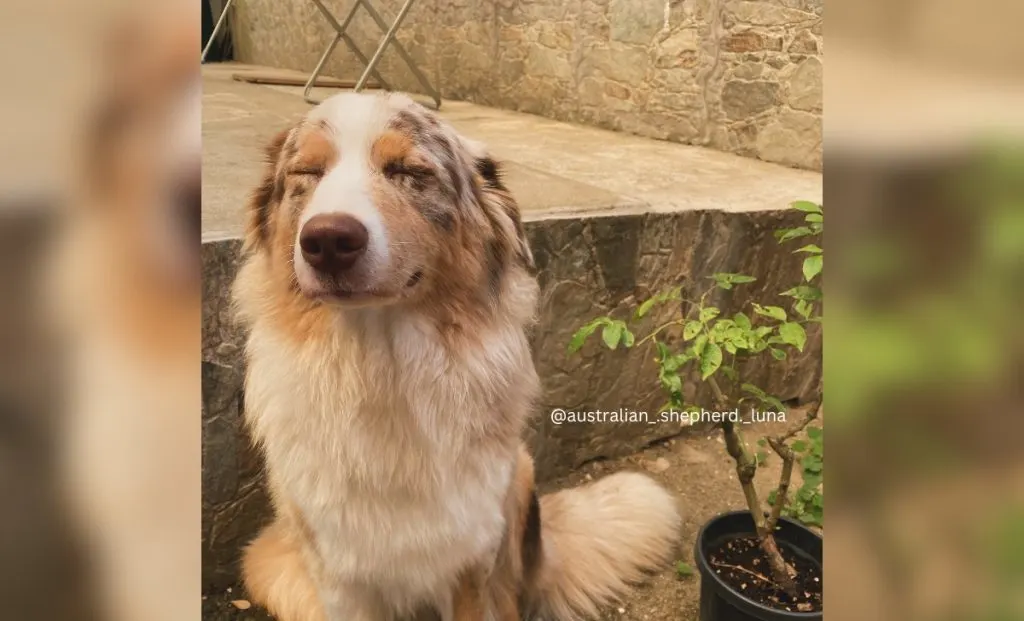
Red merle tri colors are another rather common type of red merle coat color in the Australian Shepherd breed.
These adorable dogs have stunning marbled coats with white patches on their face, chests, and paws, as well as brown spots on their cheeks, eyebrows, and the inside of their legs.
This mottled pattern is extremely popular, although it is a bit rarer than the blue tricolor merle shade.
Heterochromia is also quite common, making these canines stunning to look at.
Non-standard Australian Shepherd Colors
There are also some coat colors that are considered non-standard and aren’t accepted by the AKC.
Most of the time, these colors are an indication that the dog isn’t purebred, or the colors are forbidden as there is a high chance they are connected with certain health problems.
Keep in mind that different kennel clubs can have a slightly different breed standard. For example, the United Kennel Club (UKC) and the Federation Cynologique Internationale (FCI) might have some other recognized coat colors that the AKC doesn’t allow.
However, in the case of our beloved Aussies, all major kennel clubs agree that the following coat shades are faulty:
1. Yellow

Yellow Australian Shepherds have a light cream coat color and dark noses. These pups can often have white spots on their bodies.
If they are really light, one might confuse them with white Australian Shepherds. However, at a closer look, you can see that they have a yellow tint.
On the other hand, some yellow Aussies can have a coat as dark as Golden Retrievers!
They are the result of a recessive gene that causes this light color. The same gene can be observed in Yellow Retrievers and Lemon Pointers, two breeds in which this color is allowed.
Most yellow Aussies aren’t mutts but purebred dogs. The reason why they are disallowed is that they are common carriers of a merle gene that didn’t express itself, as it doesn’t affect the gene that causes yellow coloring. This is called a cryptic merle.
Breeding two merle dogs is forbidden due to the many health issues it can cause. As it’s challenging to know whether a yellow Aussie carries a merle gene without extensive genetic testing, these dogs are considered non-standard and aren’t recognized by kennel clubs.
2. White
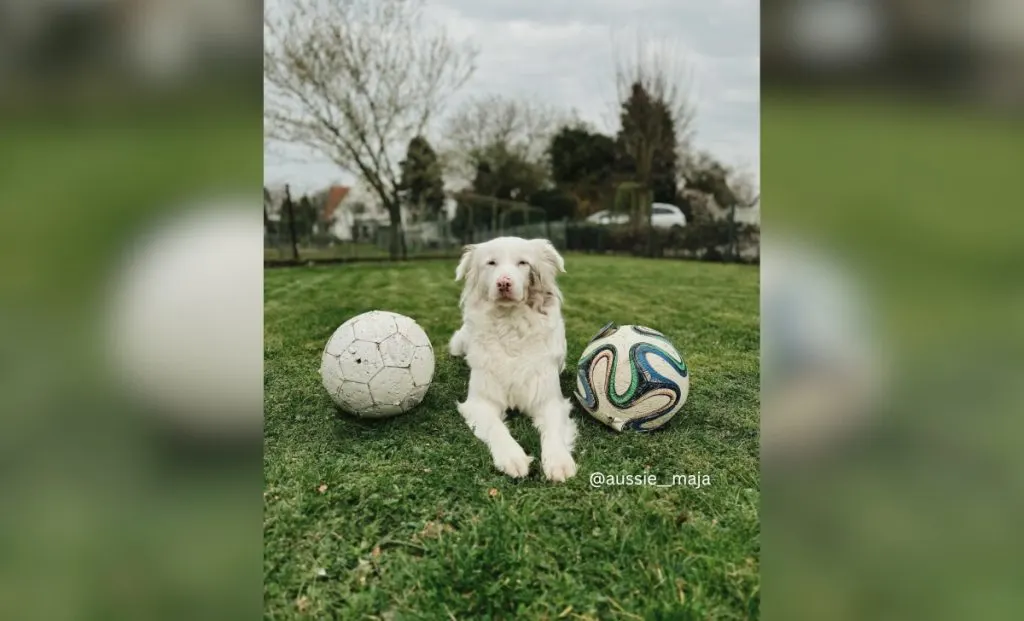
White Australian Shepherds have a solid white coat and light blue eyes.
They are mostly the result of breeding two merle dogs together. Confused? Let me explain.
The merle pattern is the result of a dominant merle gene. A dog only needs to inherit this gene from one parent for the pattern to express itself.
However, if a dog inherits two merle genes, the dilution will be total, resulting in a pure white coat color and blue eyes. Heterochromia can occur, but it’s rarer than in blue or red merle coat color.
White Australian Shepherd dogs are frowned upon by most experts, as they are known for their fragile health.
Also, don’t confuse them with albino Australian Shepherds, as their color results from a different condition.
3. Sable
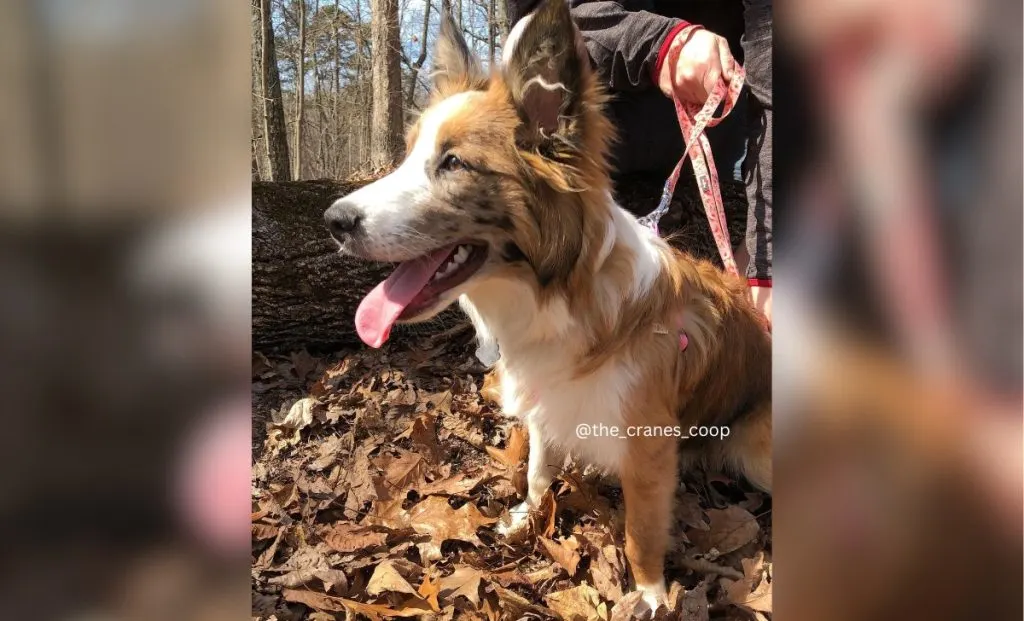
Sable was once a popular color in Australian Shepherds. Today, however, it is extremely rare in this breed – although it is common in some other dogs, such as Belgian Malinois and German Shepherds.
According to the Australian Shepherd Health and Genetics Institute, the reason behind this is that the sable gene is dominant to the tan trim gene that causes tan markings. This means the two cannot coexist, and the sable gene had to be expelled from the gene pool.
Sable dogs have hairs with a black tip. This darkening of the tip only happens on the base coat color, which is almost always yellow. White markings are unaffected, and tan markings are impossible to occur.
As the sable coat color is connected with the yellow coat, it too has a high chance of a dog being a cryptic merle. Because of this, these pups are banned from kennel clubs, and you won’t be able to register them.
4. Brindle
Brindle is a pattern that causes tiger-like stripes on a base coat color, typically brown. While common in some other dog breeds, such as American Bullies, they are extremely rare in Australian Shepherds.
In fact, if you see a brindle Australian Shepherd, he is most likely a mixed breed. No good breeder would ever breed, sell, or advertise a brindle Aussie.
5. Fawn And White
A fawn and white Australian Shepherd is the result of mixing brown and red genes with a dilution gene. This gene will dilute the red shade to a fawn hue, leaving the white color untouched.
Unlike most other non-standard coat colors, fawn and white Aussies aren’t known to be any more sickly than dogs in standard colors.
However, as the dilution gene is considered undesirable, these pups are not allowed to breed and they aren’t recognized by the AKC.
6. Albino
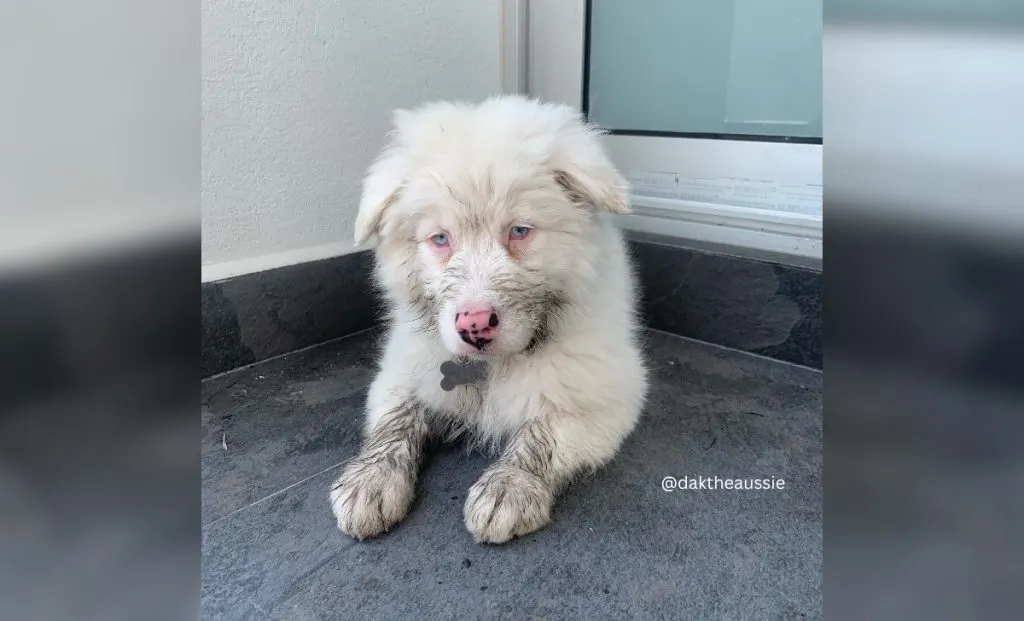
Finally, you have albino Australian Shepherds.
This coat color is the result of albinism, a health condition that causes a lack of pigment in the dog’s coat, eye color, and skin.
At first glance, these pups might look the same as white Aussies. However, if you take a closer look, you will see a few differences.
While double merle pups have a pure white coat, dogs with albinism have a white coat with a slight pinkish hue. Their hairs might even appear translucent at times!
Another indicator is the color of your Aussie’s nose. White Australian Shepherds can have dark spots on their nose, or their nose might even be entirely brown. On the other hand, dogs with albinism don’t have any pigment on their noses, making them bright pink in color.
Finally, you can look at the color of the dog’s eye. Almost all dogs with albinism have the same pink tint in their eyes, as well. Some might even have eyes that are entirely red in color!
Albinism is extremely rare in the Australian Shepherd breed. Most Aussies with white coats are double merles.
Health Concerns In Certain Australian Shepherd Coat Colors
As I’ve briefly mentioned, the reason why some coat colors are banned is due to their relations with certain health problems. However, what makes Australian Shepherds somewhat unique is that there are some ethical questions with plenty of accepted colors, as well.
Color Dilution Alopecia
For example, the dilution gene is responsible for a few health concerns in dogs – most notably, color dilution alopecia (CDA).
CDA occurs in rare cases, but it can only happen in dogs with a dilution gene. It is most prevalent in blue dogs, even though it can happen in any dog with a dilution.
This condition causes poor skin and hair quality, and it can lead to hair loss.
While not lethal, it can affect a dog’s quality of life, especially if the pup gets bald patches.
If your dog has CDA, he’ll need help from a veterinarian who might prescribe topical treatment or oral antibiotics.
Double Merles
Another common concern is the merle gene, which is extremely prevalent in the Australian Shepherd gene.
On their own, red and blue merle coat colors are not connected with any health issues. Dogs with a merle pattern can live a long life without any problems whatsoever.
The problem lies in double merles, dogs that have inherited a merle gene from both of their parents.
When two merle genes combine, they cause a strong dilution that affects not just the coat, skin, and eye color but also the dog’s bones, muscles, and other organs.
As a result, double merles are highly likely to suffer from ear or eye deformities. They are often deaf, partially or totally, and some can even be blind!
Some experts claim that these pups are also more prone to bone and heart disorders, such as hip dysplasia and heart arrhythmia, but so far, the studies have shown varying results.
Either way, many experts are against breeding merle dogs, fearing that this can lead to an increase in the number of double merles.
This is especially risky as some dogs, such as yellow Aussies, can be cryptic merles. They are the carriers of the gene, although you would never have guessed it just by looking at them.
Almost no one, not even puppy mills or backyard breeders, will intentionally breed two merle dogs. However, they can accidentally breed it with a cryptic merle, resulting in a faulty white litter.
Because of this, some people think that it’s for the best to ban merle dogs altogether.
Others, however, support the ethical breeding of merle dogs as long as it’s done after careful planning and lots of genetic testing.
The Importance Of Choosing The Right Coat Color
There are so many Australian Shepherd colors that it can be challenging to pick a favorite! However, you should still make an educated decision before choosing your new family companion.
Not only are some coat colors associated with an increased risk of health issues, they might also indicate that your dog is a mixed breed.
While there is nothing wrong with mutts, if you buy an Australian Shepherd without knowing that it’s a mixed breed, you might not be prepared for certain behavioral traits this dog might exhibit. This can be extremely tricky if you have small children or other pets.
Because of this, I always advise people only to buy dogs that come in coat colors AKC recognizes and accepts. This isn’t so you can brag about having a purebred dog, but so you can know precisely what you’re getting into.
Fortunately for you, there are so many different colors this amazing dog breed comes in, I am certain you’ll have no issues in finding a dog that will fit your aesthetics and preferences!
So, whether you’re looking for a running partner or a herding dog, I am sure Australian Shepherd will be just the friend you need.
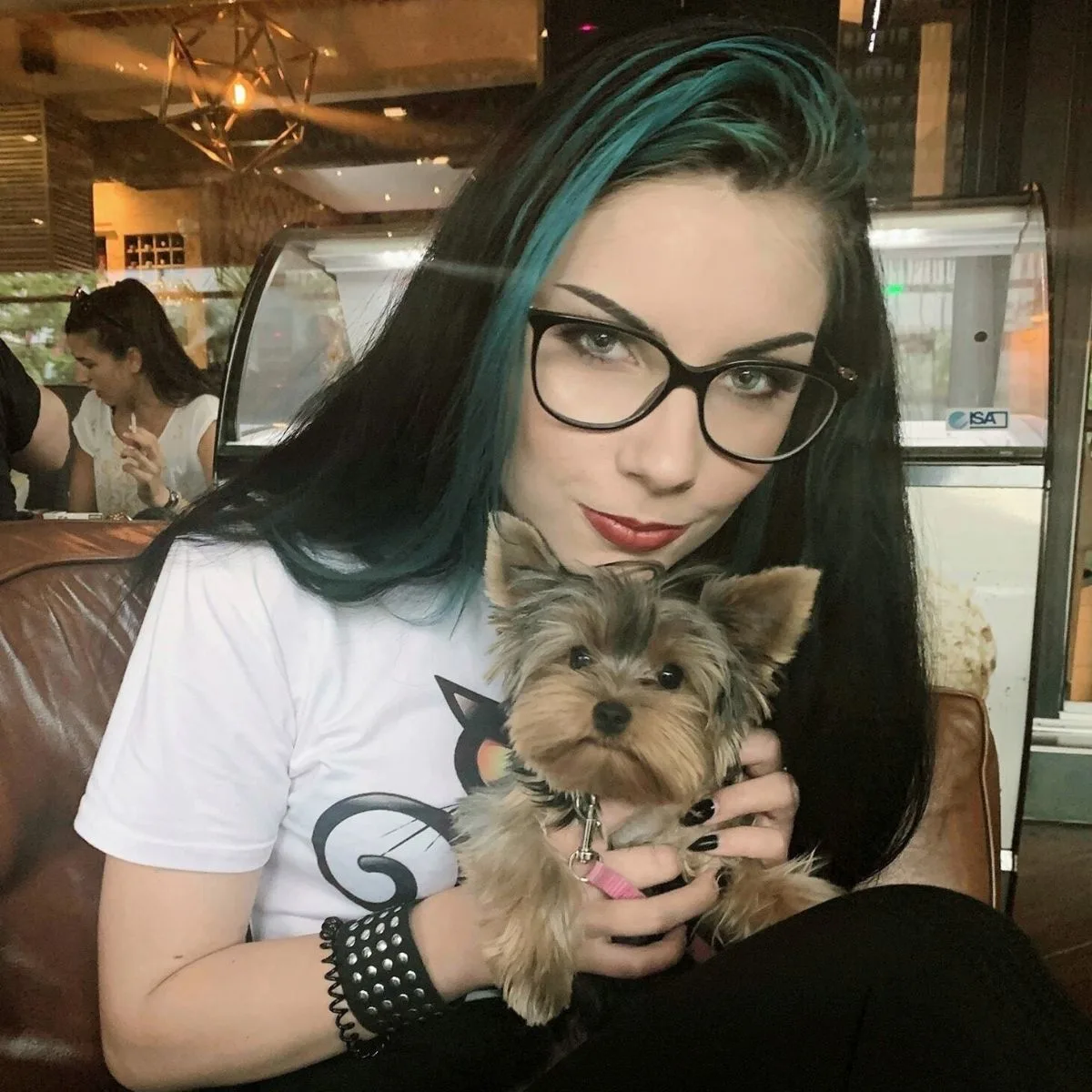
Vanja’s passion for writing started at an early age, which is why she pursued Journalism as her college degree. She can research any topic and find all the information before you bat an eye, which is a great thing for her job but a terrible one for her husband.
Even as a young child, she fell in love with everything fluffy – but dogs have a special place in her heart due to her childhood companion, a Corgie named Archie.
Motivated by her experiences and driven by a desire to give back to her four-legged companions, she spends her free time volunteering at a local dog shelter.
